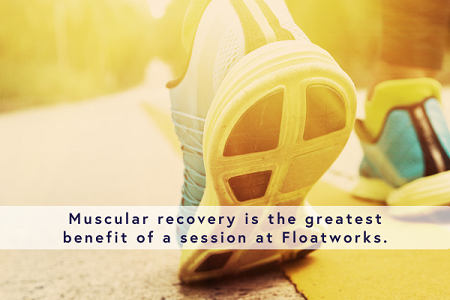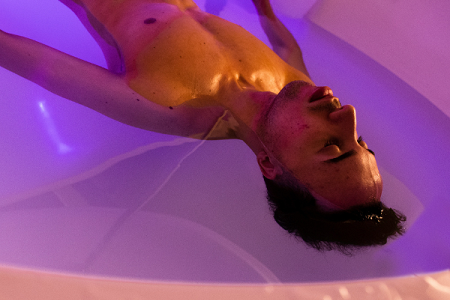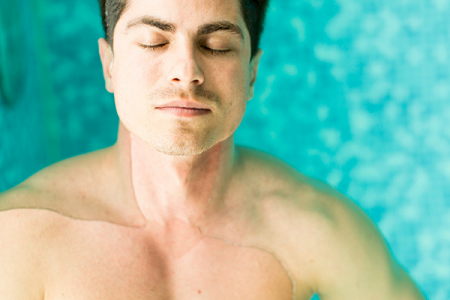Why floating and yoga complement each other perfectly
You can’t do a downward dog in the float tank, but there are still many parallels.

Yoga and floating can – and should! – go together. Allow us to explain why…
They both drive you to be aware of yourself, and the present
On the surface, it might seem like yoga and floating are disciplines poles apart: one requires precise concentration to shape and hold specific postures (they’re called Asanas, for the uninitiated); the other asks you to clear your mind completely. And this is true… but look at it this way: both encourage you to be very aware of yourself and the present. Asanas requires thought and concentration around what different parts of your body are doing, while floating almost forces you into that introspective state.
One can be a gateway to the other
Yoga teacher Adam Husler thinks both have benefits that can be translated to the other discipline. For those put off by the sheer prospect of having to look inside oneself, floating can be a shortcut to the meditative state. Take it away, Adam…
“Modern neuroscience research has proven the positive effects of meditation, and healthcare professionals regularly recommend it for easing the symptoms of anxiety and depression. Despite the clear benefits, meditation can still be relatively inaccessible or unapproachable for many, which potentially is where floating can step in; acting as a shortcut to reach a meditative state and the benefits that lie within.”
“If you asked the average person to sit still and meditate for an hour, they’d run a mile,” Adam continues, “and perhaps the idea of floating for an hour can almost be as scary for some. An hour of movement on the mat can lead to making an hour of stillness at least a touch more achievable!”
They both offer emotional health benefits…
It’s well documented by now that all forms of exercise (yoga included!) can help lift your mood, combat depression, anxiety and other mental health issues, and it’s the serotonin – the happiness hormone – produced by your brain during the exercise we have to thank for that. And yep, you’ve guessed it, the Epsom salts in a floatation tank produces the very same neurotransmitter!
…And they both have physical benefits too!
Back pain? You could schedule a few floats… or book a few yoga classes. Arthritis? A dip in the pod could help, or a few sessions of hot yoga could, too. High blood pressure? Both yoga and floating encourage better circulation and greater oxygenation in the bloodstream. Trouble sleeping? Oh, you get the idea!
Floating helps you get more out of yoga, and vice versa
If you’re already a fully-fledged yogi, there are plenty of tips and tricks that, if you take into the tank with you, can create some very powerful experiences. Kathy Timmermanis – Floatworks manager and avid floater / yogi – has been using yoga techniques in the pod regularly since she first dipped her toes. “Lots of the things I picked up from yoga really helped me relax and let go in the tank,” Kathy explains. “Take a ‘body scan’, for example; where you imagine tension releasing from each part of your body – starting at your toes and slowly going through your body to the top of your head. Yoga was where I first learned how to be comfortable with discomfort, and how to bring my mind from chatter to stillness through breathing… which is a skill I’ve found super-helpful while floating.”
“It also works the other way around,” Kathy continues. “In yoga, we can create space to bring up and work through things (feelings, thoughts, experiences) that are lingering within us. Floating does this as well, in different and often even deeper ways. Bringing that experience and self-awareness to yoga helps me go deeper into my practice every week.”
Although applying yoga techniques to floating, and vice versa, can help you get the most out of both – combining the two sequentially can take you to whole new levels. “My personal favourite is to float soon after doing yoga,” Kathy says, “ideally right after! When I float straight after yoga, I often feel my body and mind in total balance, peace, and stillness.”
Both floating and yoga make you feel better, every time
No matter what’s going on in life, most people tend to feel an awful lot better after a heavy yoga session, which is often the prime motivation for going (even if you don’t always feel like it at the time). It brings balance and calm to the mind and body, and it’s the same with floating – which helps centre your thoughts, and invariably tackle life’s obstacles and stresses in that wonderfully composed (and totally badass) manner we all strive for.
Overall…
Of course the benefits of both regular floating and yoga sessions aren’t limited to just what we’ve skimmed over here. Take a peek at our information pages for more on what floating can do for you, or this fab feature 18 Amazing Benefits Of Yoga.
Wondering what all the fuss is about? Check out our latest floating offers to find out firsthand how floating can positively impact your life…










